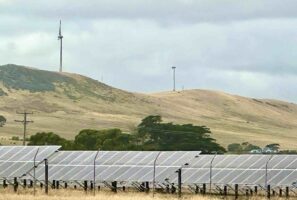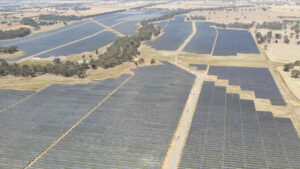The International Renewable Energy Agency (IRENA) sees the evidence of further falls in global renewable energy as a sign that governments can do more and lift ambition on reducing emissions.
The latest Renewable Power Costs Report from IRENA as shown the enormous potential for renewable energy projects to deliver the most affordable sources of new electricity generation.
“We must do everything we can to accelerate renewables if we are to meet the climate objectives of the Paris Agreement. Today’s report sends a clear signal to the international community: Renewable energy provides countries with a low-cost climate solution that allows for scaling up action.” IRENA’s director-general Francesco La Camera said.
The IRENA report shows renewable energy being the cheapest source of electricity in a growing number of countries, with renewable energy technologies being the lowest cost electricity source in a majority of countries, with solar PV projects recording particularly dramatic falls.
 IRENA saw double digit cost reductions across a range of renewable energy technologies in 2018, as technology costs, and efficiencies in the construction of projects continue to lead to cheaper projects.
IRENA saw double digit cost reductions across a range of renewable energy technologies in 2018, as technology costs, and efficiencies in the construction of projects continue to lead to cheaper projects.
In 2018, IRENA estimated that the cost of large-scale solar projects and onshore wind developments both fell by 13%. Concentrated solar thermal saw even more dramatic falls in the last year, with costs falling 26% in 2018 driven by falling technology costs and improve capacity factors. Hydroelectric projects, the most established of all renewable energy technologies also recorded a fall in cost by 12%.
In Australia, IRENA observed that the cost of large-scale solar developments have fallen by 60% between 2013 and 2018, ranking amongst the largest cost reduction achieved by countries.
Renewable power is the cheapest source of electricity in many parts of the world already today, new @IRENA ‘Renewable Power Generation Costs in 2018’ report finds. #Renewables are cheaper or w/in range of #fossilfuels. https://t.co/d1WSxtFD8x pic.twitter.com/cn9dhY4MqL
— IRENA (@IRENA) May 29, 2019
IRENA expects further falls in costs expected over the next decade, but was cautious in making a prediction for how far prices will fall in the future, noting the tendency of renewable energy technologies to beat future projections of cost reductions.
The vast majority of new wind and solar projects being commissioned over the next year will come in below the cost of the cheapest new coal, oil or gas options.
“Among projects due to be commissioned in 2020, 77% of the onshore wind and 83% of the utility-scale solar PV project capacity have electricity prices that are lower than the cheapest fossil fuel-fired power generation option for new generation,” IRENA said in the report.
IRENA noted that this would be the case even without subsidies for renewable energy technologies.
2018 saw record low prices for new solar PV projects, with auctions for off-take agreements with projects in some countries falling to as low as US$0.03 per kilowatt-hour.
At these prices, IRENA expects new solar and wind projects to out-compete existing coal-fired power station, as new projects can be built at a lower cost than that required to purchase coal.
The ability for solar and wind technologies to achieve such substantial cost reductions is a growing threat to the ongoing operation of the global coal generation fleet, as coal emerges as a more expensive away to generate electricity.
The ability for renewable energy technologies to deliver new generation capacity at the lowest cost has been a core driver in the increased uptake of renewable energy despite a lack of comprehensive or stable energy or climate change policy from the Federal government.
The new IRENA report echoes the analysis from firm Reputex that has predicted that Australia will reach up to 50 per cent renewable energy generation by 2030, without government policy intervention and despite an openly hostile Coalition government.












